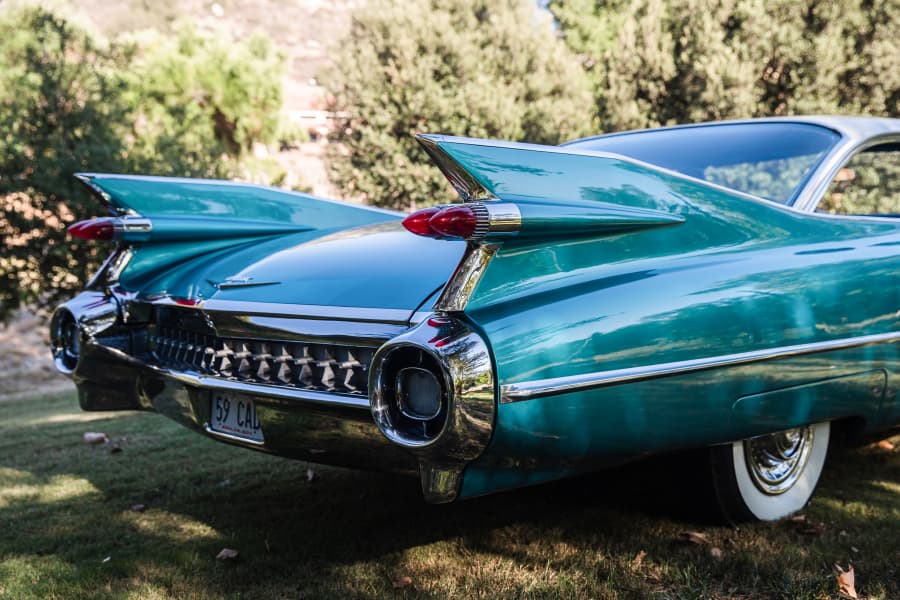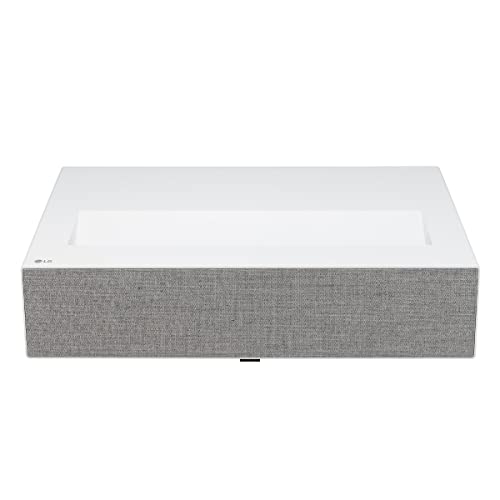Have you ever noticed those tiny triangular windows in classic cars? Those forgotten gems were called vent windows, and they solved a problem we take for granted today. Before air conditioning became standard, these clever little panes directed fresh air into your car without the roar of fully open windows. Drivers could adjust them precisely to create the perfect breeze on a summer day. Car makers phased them out in the 1970s as AC units became common, but many classic car enthusiasts still miss this simple yet brilliant feature.
Now let’s explore 25 incredible car features that vanished from our roads – and why some of them deserve a second chance.
25. Full-Size Spare Tires

Today’s compact spare wasn’t always your only option for roadside repairs. Full-size spares matched all specifications of road wheels, ensuring consistent handling and performance. Through 2001, 85% of domestic passenger automobiles left factories with full-size spare tires. The 2002 Lincoln Town Car offered the last standard full-size spare in an American luxury sedan.
24. Carburetors

Your modern fuel-injected engine owes its heritage to decades of carburetor development. These mechanical marvels operated on vacuum principles to deliver precise fuel mixtures. Carburetors remained standard equipment in 95% of American automobiles until 1985. If you listen carefully to a well-tuned vintage engine, you’ll hear the distinctive sound of mechanical fuel delivery that characterized motoring for nearly eight decades.
23. Vent Windows

Before climate control became standard, your comfort depended on clever engineering solutions. Quarter windows revolutionized automobile ventilation from 1930 through 1979. Vent windows appeared in 83% of domestic automobiles between 1940 and 1969. These triangular ports directed fresh air exactly where passengers needed it, providing relief during America’s golden age of motoring.
22. Bench Seats

Bench seats were a hallmark of cars from the early 1900s through the 1980s, accommodating three passengers side by side. They fostered a sense of openness and camaraderie among passengers. However, as automotive design evolved, bucket seats began to replace bench seats, offering better support and comfort. By the late 1980s, bench seats had largely disappeared from passenger cars.
21. Popup Headlights

When you spot a classic sports car with hidden headlights, you’re witnessing a defining era of automotive design. These mechanical systems preserved sleek profiles while meeting federal height requirements. Between 1963 and 1997, automotive manufacturers produced 161 different models featuring hide-away headlamps. The 2004 Chevrolet Corvette C5 carried the last factory-installed retractable system in North America.
20. Curb Feelers

Urban driving in the 1950s required innovative solutions for protecting your vehicle’s brightwork. Metal whiskers extended from the lower body, providing instant curb detection. Luxury automobile producers installed these devices on 42% of their vehicles from 1952 through 1959. For anyone parking a chrome-laden classic today, these simple mechanical warnings prevented countless scrapes and scratches.
19. Cigarette Lighters and Ashtrays

That phone charger in your car traces its origins to a simple cigarette lighter. Standardization transformed these sockets into universal power sources. By 1956, lighter sockets achieved 94% installation rates across domestic manufacturers. This 12-volt connection powered early mobile telephones and radar detection equipment before becoming the auxiliary power outlet we rely on today.
18. Floor-Mounted Dimmer Switches

Remember when high-beam control meant a gentle tap of your left foot? Floor-mounted dimmer switches kept both hands firmly on the wheel. Between 1940 and 1970, floor-mounted dimmer switches appeared in 88% of American-made vehicles. The intuitive design made nighttime driving safer until steering column controls became standard in the mid-1970s.
17. Tail Fins

Take a walk around any late-1950s Cadillac and you’ll witness automotive design at its boldest. Post-war optimism and jet-age inspiration transformed American car styling. The 1959 Cadillac Eldorado’s fins reached 38 inches in height, setting an industry record. Each year brought more dramatic expressions until the 1961 Imperial Crown marked the end of Detroit’s most flamboyant design era.
16. Manual Crank Starters

Maybe this one was actually discontinued right on time. Have you ever wondered what starting your car was like before electric starters? The manual crank starter marked the dawn of personal transportation in America. A metal handle inserted into the engine’s front allowed operators to start their vehicles through pure mechanical advantage. Between 1900 and 1911, 92% of all motor vehicles relied on hand cranks. For anyone restoring vintage automobiles today, even these 6 Forgotten ’80s/’90s Cars That Are Now Collectible Gems, the 1912 introduction of Cadillac’s electric starter meant dealing with hand-cranked engines was a thing of the past.
15. Hand-Pulled Parking Brakes

Pull the lever, and feel the direct connection that once defined driver control. Cable-actuated parking brake mechanisms provided immediate confirmation through mechanical feedback. Independent testing between 1965 and 1975 documented 99.7% reliability in mechanical brake systems. Simple engineering created peace of mind for generations of drivers parking on San Francisco’s steepest hills.
14. Analog Instrument Clusters

Watch a vintage speedometer needle sweep across its arc, and you’ll understand why analog gauges endured for decades. Precision movements translated vehicle data into instant visual feedback. Laboratory testing from 1950 to 1990 confirmed 96% long-term accuracy in analog gauge clusters. The 1996 Mercedes-Benz S-Class pioneered the industry shift toward electronic instrumentation.
13. Cassette Tape Players

The soundtrack to countless road trips once came from tough, reliable tape decks. These ruggedized players withstood every automotive challenge while delivering consistent performance. Between 1975 and 1995, factory-installed cassette players appeared in 89% of domestic automobiles. Look inside any well-preserved classic from this era, and you might still find a perfectly functioning cassette system ready for your favorite mixtape.
12. Manual Chokes

Starting a carbureted engine on a cold morning once required a skilled touch. A simple dashboard knob gave drivers direct control over fuel mixture. Manual choke controls appeared in 97% of American carbureted automobiles from 1950 to 1975. Anyone who has experienced the satisfaction of a perfect cold start understands why some enthusiasts still prefer this direct connection to engine management.
11. Fender-Mounted Side Mirrors

Spot a classic Japanese car with fender mirrors, and you’re seeing practical engineering at work. High-mounted mirror placement provided superior rearward visibility in dense traffic. Safety studies in 1965 documented a 34% reduction in blind spots with fender-mounted mirror systems. This practical design survived longest on Toyota’s commercial vehicles, with final installations in 1989.
10. Automatic Seat Belts

Open the door of a late-1980s car and watch safety engineering in motion. Motorized belt systems emerged as Detroit’s novel approach to passive restraint requirements. Manufacturers equipped 32% of domestic automobiles with automatic seat belts between 1987 and 1995. While current safety systems rely on airbags, these moving belts represented an innovative chapter in automotive safety
9. Opera Windows

Step back to an era when personal luxury meant distinctive design touches. Small fixed windows added both illumination and sophistication to formal rooflines. Chrysler installed opera windows in 43% of their luxury models between 1973 and 1983. From Lincoln’s Continental to Chrysler’s Cordoba, these distinctive ports defined American luxury until aerodynamic design priorities shifted in the late 1980s.
8. Hood Ornaments

Stand before a classic luxury car and admire automotive sculpture at its finest. These precision-crafted emblems served as brand signatures while guiding drivers’ view down the hood. Between 1925 and 1965, hood ornaments adorned 78% of luxury vehicles worldwide. Mercedes-Benz maintained this tradition longest, until modern pedestrian safety regulations reshaped front-end design.
7. Column Shifters

Slide across a vintage bench seat and appreciate Detroit’s solution to interior packaging. Column-mounted gear selectors maximized passenger space while maintaining easy driver access. Column shifters appeared in 91% of American automobiles produced between 1945 and 1965. This efficient design enabled six-passenger comfort in even mid-sized sedans of the era.
6. T-Tops

Experience open-air motoring while maintaining chassis rigidity – the engineering goal that created the T-top roof. These removable panels offered the best of both worlds for sports car enthusiasts. Pontiac pioneered the design in 1968, and by 1978, T-tops appeared on 23% of American sports cars. The 2002 Chevrolet Camaro carried the last factory-installed T-top system, ending a distinctive era in American performance cars.
5. Headlight Wipers

Navigate through any weather condition with an innovation that kept European roads safer. Specialized wiper systems maintained optimal illumination in the harshest environments. Mercedes-Benz and Volvo documented a 27% reduction in nighttime accidents with equipped vehicles between 1975 and 1985. The height of this technology arrived in 1996 when 14 manufacturers offered these systems as standard equipment.
4. Push Button Transmissions

Touch a button, select your gear – a vision of the future from 1956. Chrysler led this revolution, integrating illuminated selector buttons into sleek instrument panels. Between 1956 and 1964, over 3.5 million vehicles featured these distinctive controls. The 1964 Chrysler Imperial marked the end of this first wave of transmission button control.
3. Swivel Seats

Experience automotive luxury as defined by smooth, effortless entry and exit. Chrysler Corporation pioneered rotating seat mechanisms that transformed accessibility. Swivel seats appeared as optional equipment on 18% of full-size American cars between 1959 and 1961. The 1961 Chrysler New Yorker offered the last factory-installed swivel seats until modern van designs revived the concept.
2. Concealed Fuel Filler Caps

Notice the clean lines of classic luxury cars, uninterrupted by visible fuel doors. Hidden fillers preserved flowing designs while protecting filling mechanisms. General Motors implemented concealed fuel doors on 65% of their luxury models between 1956 and 1962. Lincoln’s 1965 Continental showcased one of the last hidden fuel door designs behind its rear license plate.
1. Car Phones

Witness the dawn of connected driving through early car telephone integration. These systems required significant vehicle modifications and dedicated equipment. By 1985, over 190,000 vehicles in North America featured integrated telephone systems. The 1994 model year marked the end of factory-installed analog car phone systems as cellular technology transformed mobile communications.




























